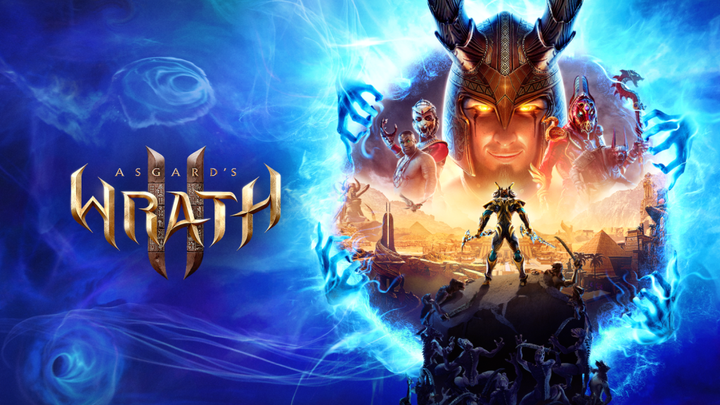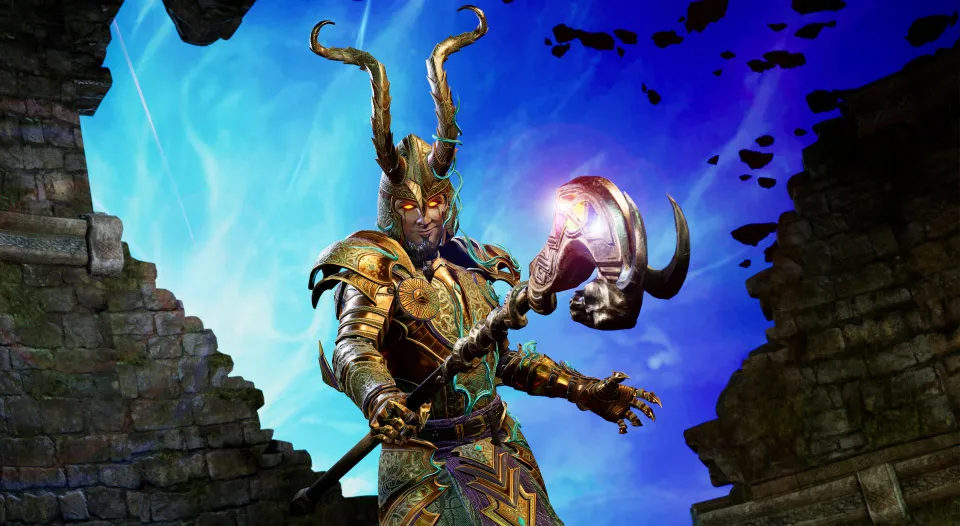You'd be forgiven for thinking that a lot of what VR has to offer are carefully designed, single-serving experiences that make you feel a part of their world for the duration of an average blockbuster movie. Yet amongst all of these are a few games that set out to rival some of the most iconic RPGs of our time, from the comfort of a VR headset. Enter Asgard's Wrath 2, a sequel to Asgard's Wrath, and a title that offers all of the well-loved beats of traditional RPG adventures but invites the player to feel every swing of a sword.
Developed by Sanzaru Games, Asgard’s Wrath 2 makes it easy for new players to jump in, providing a brief catch-up on the main beats of the story so far. Namely that the player, the Fledgling God, teamed up with the trickster Loki to acquire magical stones for his staff which would free him from his prison. Unsurprisingly, Loki betrayed the Fledgling God, stole the final stone and abandoned the player to their fate in the prison, left with nothing but a mysterious ankh artifact.
Now, in Asgard’s Wrath 2, we pick up exactly where the previous game left off. After escaping the prison, the player meets with three future-seeing beings, The Weavers, who have a new quest for the player to take on. After some more exposition, the player is put in the path of Abraxas, a mercenary with a taste for war, a resentment for the gods, and who now must endure being controlled by another — the player. It’s here we get our first real taste of what Asgard’s Wrath 2’s gameplay has to offer.
Axe And You Shall Receive
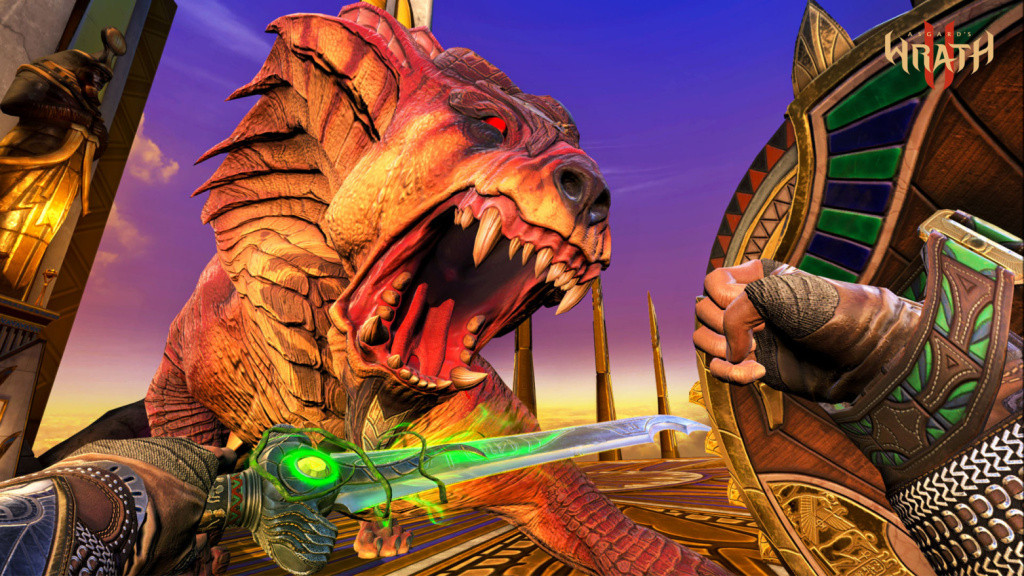
The heart of the game’s mechanics revolve around the possession of four mortal beings, through which the player will be navigating the realms, solving puzzles, and fighting enemies of various sizes and difficulties. Each character has their own skills and preferred method of fighting, meaning that the player gets to experience a number of playstyles throughout their adventure. In the case of Abraxas, the first mortal being players will possess, his combat style (at first) involves a melee sword in one hand and a throwable axe in another. Both are used in combat and for interacting with the world, be it through puzzles or the destruction of set dressing.
Now, with Asgard’s Wrath 2 being a VR game, combat requires more from the player than a standard RPG. It’s a workout, and a worthy excuse to skip a day at the gym. But it can take some getting used to if you’re not familiar with VR controls. You’ll be moving away from and dodging incoming attacks, while getting your hits in where you can. I fumbled a few times trying to avoid enemy hits, before angling myself in a position that offered me some swings of my own. You might try to counter this by relying heavily on your ranged weapon to reduce the need for too much movement, but these enemies are a little smarter than that. Use an attack too many times and they’ll start learning to counter it. When playing as Abraxas, if you throw your axe at enemies repeatedly, eventually they’ll start catching it and throw it back.
Never A Bumpy Ride
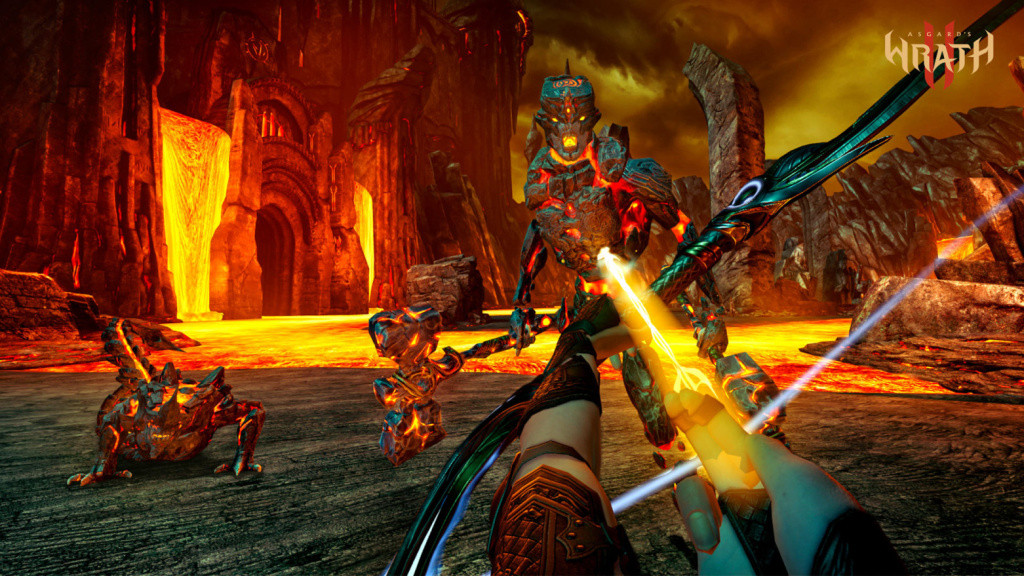
Both in and out of combat, you’ll be moving a lot when traversing the realms of Asgard’s Wrath 2. Across vast expanses by foot or by mount, climbing up ledges (which I found surprisingly satisfying), wall running and more. My initial concern was that I’d have a hard time with motion sickness. A portion of my VR library remains largely unfinished just because I can’t stomach it for longer than an hour on a good day. But it was rarely an issue in this game, which I imagine is a joint effort from the Meta Quest 3 tech and the number of comfort settings available in Asgard’s Wrath 2. An epic, 100 hour+ RPG seems incredibly daunting for a VR title, but enough care has been put into audience comfort that far more players will feel at home sinking the hours away.
The only barrier to that, however, would be the Meta Quest 3’s battery life. It’s a small headset that packs a decent amount of power, and by relying solely on an internal battery it’s no surprise that it’s power will drain in a couple of hours. So, regardless of how immersed you are in Asgard’s Wrath 2, you’ll be forced to step away periodically to charge the headset.
A Tale As Old As Time
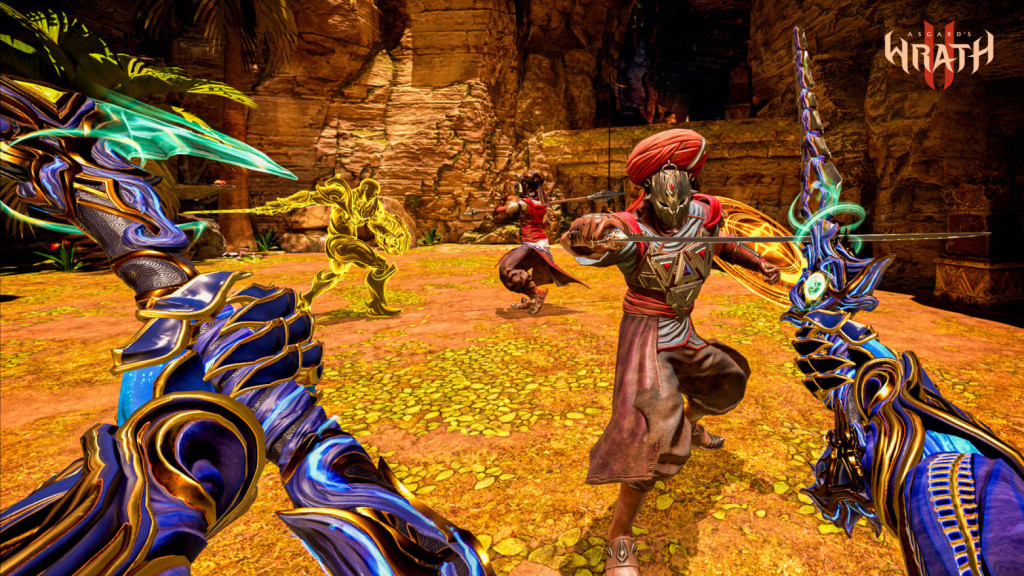
Despite its immersive gameplay and mechanics, the one area Asgard’s Wrath 2 did lose me was in its story. It serves players enough to get you to the next set piece, and link the beats of the adventure together, but it’ll leave few lasting impressions. I was relieved that a larger focus was given to Egyptian mythology, rather than the tired realms of Asgardians. It helped the settings and designs to feel fresher, and reduced the risk of comparisons to the abundance of other games also using the same inspirations. But even with these steps I never quite felt gripped by its narrative, and found that my most impactful moments came from the gameplay itself. But that’s the joy of games — be it in story or gameplay, should one aspect not quite hit the mark, the other can give you plenty of reasons to come back. And the gameplay of Asgard’s Wrath 2 is a shining beacon for VR RPGs.
You’ll play through seven Sagas that’ll span multiple mortal beings to control, followers to find and build relationships with, bosses to overcome, and puzzles to solve. All the main elements of a modern RPG now offered in a more immersive experience — and you will feel a part of the world. Asgard’s Wrath 2 ensures players will grapple with a very tactile game, making full use of the Quest 3’s capabilities. Outside of the main story, players also can take on the Uncharted Rift, a sort of dungeon crawler that unlocks early on. It allows players to assume the role of one of the four mortal beings to put their skills to the test. Here, you’ll be able to nab some special loot, armor and more to take back into your main story playthrough. It’s a neat addition to the game’s base offerings, ensuring that there’s always more to play.

 No ads, our video library,
No ads, our video library,
